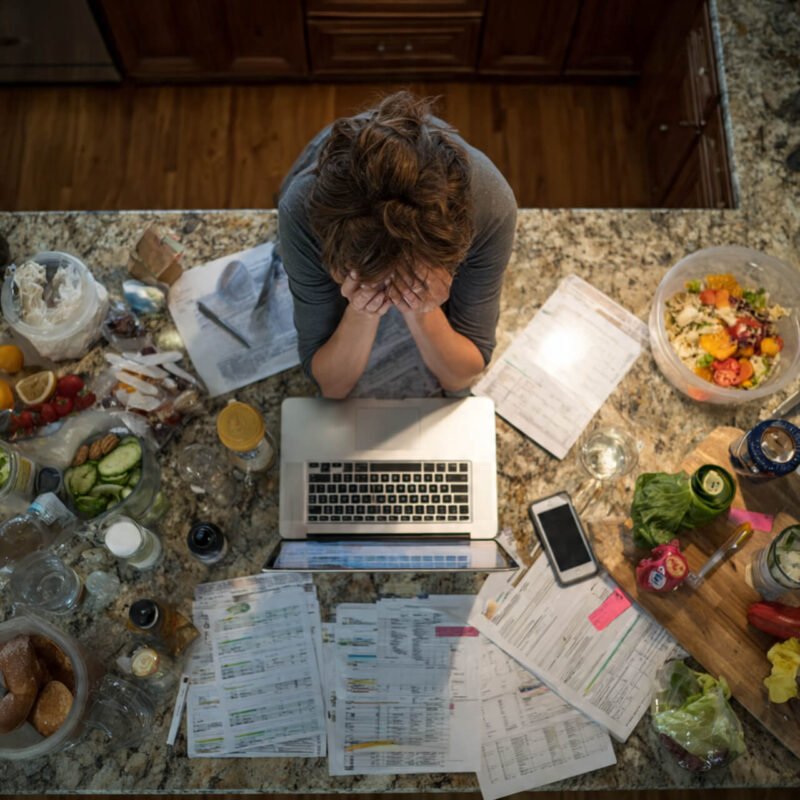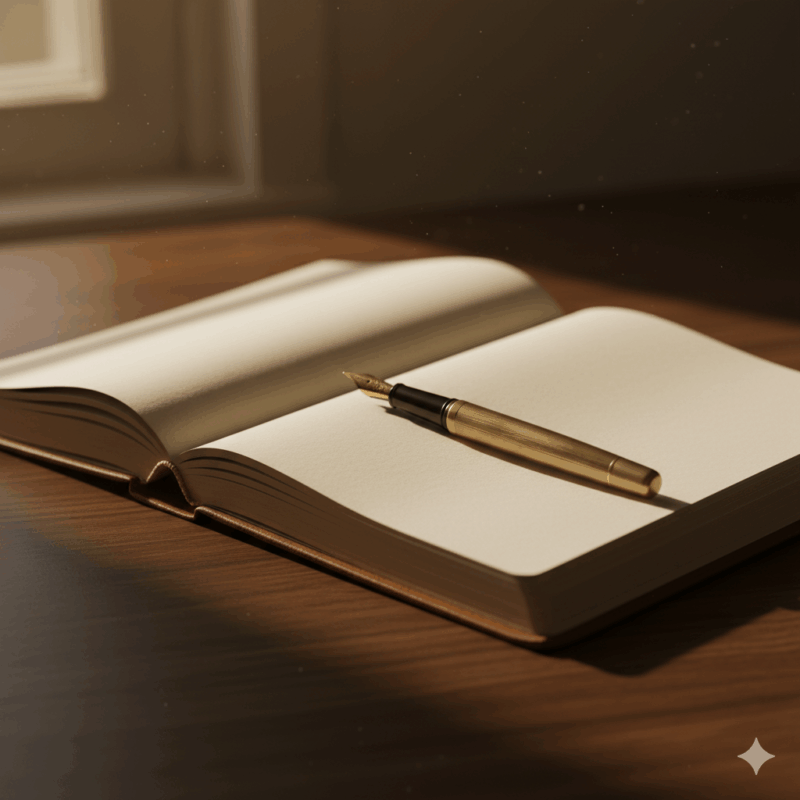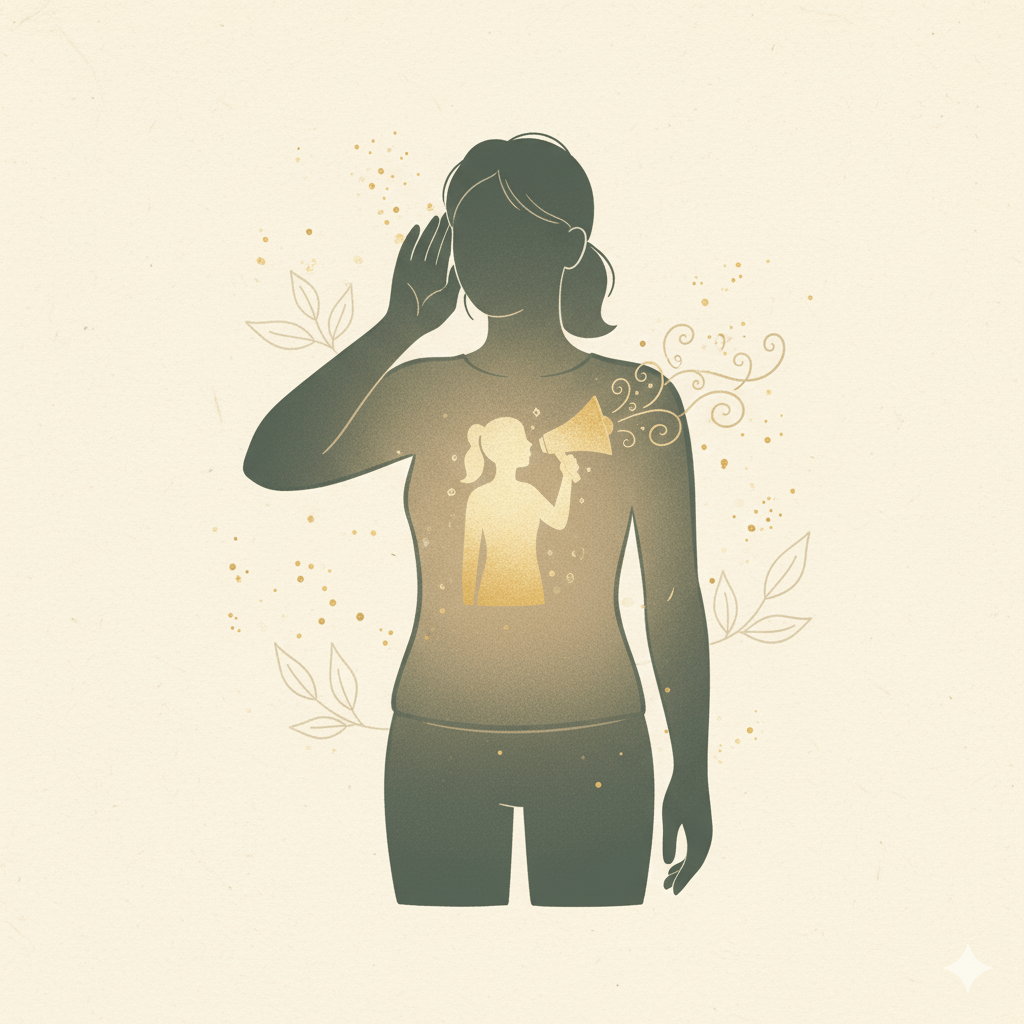Read Time: 25 Mins
Quick Summary: Decision fatigue isn’t just about making too many choices—it’s about trying to control outcomes that were never yours to decide. This guide shows you how to use ancient Stoic philosophy to release what you can’t control, make better decisions with less mental drain, and finally stop carrying the weight of other people’s lives. Includes practical exercises, journal prompts, and a 5-minute daily practice you can start today.

You’ve tried everything to fix your decision fatigue.
You’ve simplified your wardrobe. Created morning routines. Automated bills. Meal prepped on Sundays. You’ve read the articles about Steve Jobs wearing the same black turtleneck and Mark Zuckerberg’s gray t-shirts.
But you’re still exhausted.
You’re still lying awake at 2 AM replaying that conversation you had, wondering if you said the wrong thing. Still standing in front of the toothpaste aisle for 10 minutes, completely paralyzed. Still feeling that crushing weight in your chest when someone asks, “What do you think we should do?”
And here’s the worst part: You feel like you’re the only one. Like everyone else has figured out how to handle this, and you’re uniquely broken. Your partner doesn’t understand why choosing a restaurant feels impossible. Your friends don’t get why you’re “overwhelmed” by a grocery store.
Maybe you’ve even asked yourself: “Is decision fatigue actually real, or am I just lazy?”
Let me be clear: You’re not broken. You’re not lazy. And you’re not alone.
This is one of the most common struggles people are quietly dealing with. The question “Is decision fatigue real or am I just broken?” gets asked hundreds of times across Reddit, support groups, and therapy offices every single day.
Here’s what those productivity articles don’t tell you: The exhaustion isn’t coming from making too many decisions.
It’s coming from trying to make decisions about things that were never yours to decide in the first place.
Your partner’s mood. Your coworker’s opinion of you. Whether your friend takes your advice. How your project will be received. Whether you’re “doing enough” as a parent, professional, partner, friend.
You’re not just deciding what to wear or what to eat—you’re trying to control outcomes you have zero actual power over. And that’s not decision-making. That’s just anxiety pretending to be productivity.
- What Is Decision Fatigue? (And Why Traditional Solutions Don't Work)
- Common Decision Fatigue Symptoms You Might Not Recognize
- Decision Fatigue and Parenting: The Invisible Mental Load
- How I Overcame Decision Fatigue Using Ancient Philosophy
- But I Wish I Could Tell You I've Mastered This
- Why Standard Decision Fatigue Advice Fails
- Why You're Still Experiencing Decision Fatigue After Trying Everything
- The Stoic Solution to Decision Fatigue: Three Principles That Actually Work
- The Hidden Cost of Decision Fatigue: Losing Your Present Moment
- Your 5-Minute Morning Practice for Decision Fatigue Relief
- The Decision Hierarchy Framework: How to Know Which Decisions Actually Matter
- How to Ask for Help Without Feeling Incompetent
- What Overcoming Decision Fatigue Looks Like in Real Life
- The Bottom Line: Letting Go of Outcomes Through Stoicism
- Try This Ancient Philosophy Practice for Decision Making Today
- 3 Everyday Mastery Steps: Start Releasing Decision Fatigue Today
- Common Questions About Decision Fatigue and Stoic Philosophy
What Is Decision Fatigue? (And Why Traditional Solutions Don’t Work)
Decision fatigue is the mental exhaustion that comes from making too many choices. Research shows that the quality of our decisions deteriorates after making many choices in a row—but here’s what most articles miss: the real drain isn’t from trivial choices like what to wear. It’s from trying to make decisions about things outside your control.
Traditional decision fatigue solutions focus on:
- Reducing choice volume
- Creating routines and habits
- Automating daily decisions
- Simplifying your environment
These help with surface-level mental load, but they don’t address the root cause: boundary confusion about what’s actually yours to decide.
Common Decision Fatigue Symptoms You Might Not Recognize
It’s not just the big life choices that drain you.
Sometimes it’s standing in the pasta sauce aisle for 15 minutes, frozen. It’s staring at the fridge unable to choose lunch. It’s your friend texting “Want to grab coffee?” and feeling a wave of panic because now you have to decide when, where, what time works, whether you have energy for socializing…
And then you feel pathetic. Because it’s just coffee. Why is this so hard?
Common decision fatigue symptoms include:
- Mental exhaustion from everyday choices
- Analysis paralysis over minor decisions
- Irritability and emotional overwhelm
- Avoiding decisions entirely
- Second-guessing choices you’ve already made
- Feeling drained by other people’s requests
- Difficulty being present in the moment
But here’s what’s really happening: It’s not that choosing coffee is objectively difficult. It’s that you’re already carrying the weight of 1,000 other invisible decisions, and this is the one that finally broke the scale.

Decision Fatigue and Parenting: The Invisible Mental Load
Maybe your partner asks, “Why is this so hard for you?” when you can’t decide what’s for dinner—the fourth night this week they’ve asked you to choose. They don’t see the invisible load: the mental tracking of what everyone likes, what’s in the fridge, what you had yesterday, whether it’s healthy enough, whether you have time to cook it, whether anyone will complain.
They’re asking you to make one decision. You’re carrying twenty.
This is especially true if you’re the person in your household carrying the “mental load”—the invisible work of remembering, planning, anticipating, and coordinating everything for everyone.
You’re not just deciding what’s for dinner. You’re managing:
- What groceries need to be bought
- Who has dietary restrictions this week
- What’s expiring in the fridge
- Whether anyone has a game/event that affects timing
- Whether you have the energy to cook or need backup options
Your partner sees one decision. You’re making fifteen.
And when they say, “Just pick something,” they don’t realize they’re actually saying, “Continue doing all this invisible work I don’t see.”
How I Overcame Decision Fatigue Using Ancient Philosophy
I figured this out when my daughter became a mother at 19.
Suddenly, I was making a thousand decisions a day about her life. What she should do. How she should handle things. Whether she was making the right choices. I researched, advised, planned, worried. I carried the mental weight of her entire path forward.
Five years ago, that would have destroyed me. I would have spiraled, tried to control everything, exhausted myself managing outcomes I couldn’t actually manage.
But by then, I’d learned something from the ancient Stoics that changed everything:
Most of what we’re calling “decisions” aren’t actually ours to make.
Stoic philosophy, developed in ancient Greece and Rome, teaches a fundamental principle: we must distinguish between what is within our control and what isn’t. The Stoic philosopher Epictetus divided everything in life into two categories: things within our control, and things outside our control. And here’s the part that solved my decision fatigue:
We don’t get to decide outcomes. We only get to decide our responses.
I couldn’t decide my daughter’s path. But I could decide whether to respond with anxiety or trust. I couldn’t control her struggles. But I could control whether I was present or intrusive. I couldn’t make her choices for her. But I could choose to believe she was capable of making them herself.
That shift—from trying to control outcomes to choosing my response—eliminated about 90% of my mental exhaustion overnight.
And it works for everything.
But I Wish I Could Tell You I’ve Mastered This
I haven’t.
A few weeks ago, I sat outside in the cold and cried.
Not the kind of crying you do quietly into a tissue. The ugly kind—the kind where your face gets hot even though the air is freezing, and you can’t catch your breath properly.
I’d just spent another full day being a nan while trying to work from home. Laptop open, baby crying, my daughter overwhelmed. The workload was suffocating—trying to be present for my grandson, watch my daughter struggle, and still meet my own responsibilities.
And she wasn’t listening—not to me, not to anyone offering help. Just pushing through, drowning, refusing every hand extended her way.
I wanted to fix it and to make her listen.Really wanted to control the outcome so badly my chest physically hurt.
But I couldn’t.
And sitting there on that cold step, shivering, wiping my face with my sleeve, I realized: I was crying because I was trying to carry decisions that weren’t mine. Her choice to refuse help? Not mine. Her path through new motherhood? Not mine. Whether she’d figure it out in time? Not. Mine.
The only decision I actually had was this:
Could I show up tomorrow without trying to control the storm?
Because here’s what the Stoics understood that I’m still learning: Some storms you can’t stop. You can only decide who you’re going to be while the wind is blowing.
All we can do is ride it out. Wait for the winds to change. Because they always do.
Now? I don’t have sleepless nights replaying every conversation, trying to “decide” what she should do differently. My mindfulness techniques help me switch my brain off. On the rare nights I struggle, I put on meditation music and remind myself: This is not mine to control.
That doesn’t mean I don’t care.
It means I’ve learned to care without carrying.
Why Standard Decision Fatigue Advice Fails
Most advice about decision fatigue treats it like a resource management problem. You have X amount of decision-making capacity, so minimize decisions to conserve energy.
That’s not wrong. It’s just incomplete.
Because it doesn’t address the real problem: You’re trying to make decisions about things that aren’t actually decisions.
Standard advice says:
- “Reduce your choices” → But you’re still agonizing over the choices that remain
- “Create routines” → But you’re still fried by everything outside the routine
- “Automate everything” → But you can’t automate your worry about other people’s reactions
The real problem isn’t volume. It’s boundary confusion.
You’re treating someone else’s life choices as your decisions. Someone else’s emotional reactions as your responsibility. Future outcomes you can’t predict as problems you need to solve right now.
No morning routine is going to fix that.
Why You’re Still Experiencing Decision Fatigue After Trying Everything
The Real Problem Isn’t Volume—It’s Boundary Confusion
If you’ve simplified your wardrobe, automated your bills, and created routines but you’re STILL drained—you’re not doing it wrong. You’re solving the wrong problem.
The exhaustion isn’t coming from deciding between 40 types of cereal. It’s coming from the invisible weight you’re carrying: trying to manage your boss’s mood, control your partner’s choices, guarantee your kids’ happiness, predict strangers’ reactions, and somehow make everything turn out “right.”
You’re lying awake at 2 AM, replaying a conversation from three days ago, trying to “decide” if you should have said something differently—as if you could go back and change it. You’re carrying the weight of hypothetical decisions about things that already happened.
That’s not decision-making. That’s torture.
What You’re Actually Trying to Control
Here’s what nobody tells you about decision fatigue: The exhaustion isn’t from making too many decisions. It’s from trying to make decisions about things that aren’t actually yours to decide.
Think about it: When was the last time you felt truly exhausted by a decision that was completely, 100% within your control? Choosing which words to write? Which route to take on your run? What to cook when you actually wanted to cook?
Those decisions might require thought, but they don’t drain you.
What drains you is the invisible to-do list running constantly in the background:
- Have I said the right thing?
- Am I disappointing someone?
- What if this doesn’t work out?
- Should I have done it differently?
- What will they think?
- Am I doing enough?
None of those are decisions. They’re attempts to control outcomes, manage other people’s inner lives, and somehow guarantee a future you cannot guarantee.
That’s not decision-making. It’s trying to play god in situations where you’re human.
Why Depletion Makes Everything Worse
And no amount of black turtlenecks or morning routines will fix that.
What you need isn’t better productivity hacks. You need better boundaries—specifically, boundaries around what is and isn’t yours to decide.
And here’s what makes it worse: When you’re depleted, you don’t just feel exhausted—you actually make worse decisions. You default to the easiest option, not the best one and then say yes when you mean no. You avoid important choices entirely because your brain is protecting itself from one more thing.
That’s where ancient philosophy comes in.

The Stoic Solution to Decision Fatigue: Three Principles That Actually Work
What Is the Dichotomy of Control? (Stop Deciding Things That Aren’t Yours)
The Stoics had a simple test: Can you guarantee this outcome through your own direct action?
If yes → It’s yours to decide. Decide clearly and move on.
If no → It’s not actually a decision. It’s a preference about something you don’t control.
This is the core of Stoic philosophy for decision making: focusing only on what you can control while releasing everything else.
Examples:
❌ NOT YOUR DECISION:
- Whether your email will offend someone
- If your friend takes your advice
- Whether your boss likes your presentation
- How your kid’s life turns out
- If people think you’re doing enough
✅ YOUR DECISION:
- Do you send a clear, honest email
- If you offer thoughtful advice when asked
- If you prepare your presentation well
- Whether you’re present and supportive with your kid
- Living according to your own values
The practice: When you feel decision fatigue creeping in, ask: “Can I guarantee this outcome?” If not, you’re trying to decide something that isn’t yours. Let it go.
This single question eliminates most decision-making stress relief needs instantly. If you want to explore how Stoic principles like this build long-term mental resilience, I’ve written an in-depth guide on building resilience with Stoicism that shows how these practices strengthen your ability to handle life’s challenges.
What Are Preferred Indifferents in Stoicism? (Most Choices Don’t Actually Matter)
The Stoics had this category called “preferred indifferents”—things that are nice to have but don’t affect your character or happiness.
Which pasta sauce you buy? Preferred indifferent. Which Netflix show you watch? Preferred indifferent. Which route you take to work? Preferred indifferent.
Here’s the liberation: For preferred indifferents, there is no “best” choice. There’s just “a perfectly fine” choice.
The Stoics called these “preferred indifferents,” but here’s the modern translation you actually need to hear: Most things just need to be “good enough.”
Not perfect, not optimal either. Not the absolute best choice after researching 47 options.
Good. Enough.
Your kid’s lunch doesn’t need to be Instagram-worthy, and your email doesn’t need to be perfectly worded. Your outfit doesn’t need to be the absolute best combination in your closet.
It just needs to be fine.
And “fine” is not settling. “Fine” is wisdom. It’s knowing that your time and energy are finite, precious resources—and spending them optimizing a pasta sauce choice is stealing them from things that actually matter.
This is practical stoicism for everyday life: recognizing that most daily decisions are preferred indifferents and treating them accordingly.
The practice: Before agonizing over a choice, ask: “Will this matter to who I’m becoming as a person?” If not, pick the first acceptable option and move on.
How to Use Memento Mori for Better Decision Making (Most Decisions Disappear When You Zoom Out)
The Stoics meditated on death—not to be morbid, but to get perspective.
Marcus Aurelius wrote: “You could leave life right now. Let that determine what you do and say and think.”
Memento mori means “remember you must die”—a daily practice that helps eliminate decision paralysis by providing instant perspective.
The question that kills decision fatigue: “Will I remember making this decision in a year?”
Usually? No.
And if you won’t remember the decision, why are you spending 30 minutes making it?
The memento mori daily practice: When stuck in analysis paralysis, ask: “Five years from now, will it matter which option I chose?” This eliminates about 80% of decisions instantly.
The Hidden Cost of Decision Fatigue: Losing Your Present Moment
Decision fatigue doesn’t just steal your energy—it steals your ability to be here, now.
You’re sitting with your kid, but mentally you’re three hours ahead worrying about tomorrow’s meeting. Trying to enjoy a walk, but you’re replaying last week’s conversation, trying to “decide” if you should have said something differently. Having dinner with your partner, but you’re running through the mental checklist of everything you still need to figure out.
The Stoics had a term for this: being “future-sick” or “past-sick.” Marcus Aurelius wrote: “Confine yourself to the present.” Not because the future doesn’t matter, but because you can’t actually make decisions about things that haven’t happened yet—or redecide things that already did.
This is why decision fatigue feels so suffocating. You’re never actually present because you’re trying to live in three timelines at once: replaying the past, managing the present, and controlling the future.
But here’s the truth: You can only make decisions in the present moment. Everything else is just rumination pretending to be decision-making.
This mental exhaustion from overthinking is one of the most draining aspects of decision fatigue—and one that ancient philosophy directly addresses.
The practice: When you catch yourself “deciding” about the past or future, ask: “What decision can I actually make right now, in this moment?” Usually, the answer is: “Nothing. I’m just worrying.” That awareness alone brings you back to the present—where actual decisions (and actual life) happen.
Want more philosophical wisdom for everyday life? Subscribe to the Everyday Mastery newsletter for weekly reflections, practical Stoic exercises, and prompts that help you think clearer and live better. No fluff, just real guidance.

Your 5-Minute Morning Practice for Decision Fatigue Relief
Here’s how to stop overthinking daily choices and rewire your brain to release what you can’t control:
Every morning, write three lists:
1. Things I control today:
- Effort
- My attention
- Kindness
- Honesty
- My response to challenges
2. Things I don’t control today:
- Other people’s reactions
- Outcomes of my work
- What happens in the news
- Traffic/weather/delays
- Other people’s choices
3. One decision I’m releasing:
- Pick one thing you’ve been agonizing over that isn’t actually yours to decide
- Write: “This is not mine to control. I release it.”
This takes 5 minutes. It will save you hours of mental exhaustion.
This is practical stoicism for everyday life—a simple morning routine that addresses the root cause of decision fatigue rather than just managing symptoms. If you want to go deeper with daily Stoic reflection practices, I’ve written a complete guide on the Stoic reflection habit loop that shows you how to build this into a sustainable daily practice.
The Decision Hierarchy Framework: How to Know Which Decisions Actually Matter
Not all decisions deserve equal mental energy. Here’s a decision hierarchy framework example for eliminating decision-making stress:
TIER 1: Character Decisions (Rare—worth deep thought)
These shape who you’re becoming:
- Core values and principles
- How you treat people when it’s hard
- What you’re willing to sacrifice for
- Make these slowly and carefully
TIER 2: Consequential But Reversible (Make them fast)
These have real impact but can be changed:
- Job changes (you can change jobs again)
- Where to live (you can move)
- What projects to pursue (you can pivot)
- Give these one focused session, then decide
TIER 3: Preferred Indifferents (Use “good enough”)
These don’t affect who you’re becoming:
- Consumer purchases
- Entertainment choices
- Daily routine details
- Pick the first acceptable option, move on immediately
TIER 4: Not Your Decisions At All (Let go completely)
These belong to other people or fate:
- Other people’s life choices
- How people perceive you
- Future outcomes you can’t control
- Recognize these aren’t decisions. Release them.
The practice: Before making any decision, identify which tier it belongs to. This tells you how much energy to spend.
This decision hierarchy framework helps you stop wasting mental energy on low-importance choices while preserving your capacity for what truly matters.
How to Ask for Help Without Feeling Incompetent
One of the most common questions people ask quietly: “How do I ask someone to make decisions for me without seeming pathetic?”
Here’s the reframe: You’re not asking them to make YOUR decisions. You’re recognizing that some decisions don’t need your specific input—and delegating those isn’t weakness, it’s wisdom.
Try this language:
For everyday decisions:
- ❌ “I can’t decide, you do it” (implies incompetence)
- ✅ “This isn’t something I need to weigh in on. Your call.” (implies trust and delegation)
For bigger life decisions where you genuinely need input:
- ❌ “Tell me what to do” (implies you can’t think for yourself)
- ✅ “I’m at capacity. Can you help me think through this?” (implies you’re managing your resources wisely)
The Stoics would call this recognizing your limits—which is not the same as being limited.
What Overcoming Decision Fatigue Looks Like in Real Life
Before: The Exhaustion Cycle
Before:
- 45 minutes researching which coffee maker to buy
- Sleepless nights replaying conversations
- Paralyzed by whether to accept a social invitation
- Exhausted from managing everyone else’s feelings
- Second-guessing every parenting choice
- Snapping at your partner for asking a simple question because it feels like “one more thing”
- Avoiding phone calls and social invitations because you “can’t handle one more conversation”
- Feeling irritable and short-tempered for no clear reason—everyone seems annoying
- Withdrawing from people you care about because you’re emotionally fried
- Feeling guilty about being “mean” or “distant” but unable to stop
After: The Clarity Shift
After:
- “This is a Tier 3 decision. This one has good reviews and fits my budget. Done.”
- “I can’t control their reaction, I can only control whether I was honest and kind. I was. Moving on.”
- “Do I want to go? Yes. Going. Do I not want to go? Not going. Either choice is fine.”
- “Their feelings are their decisions to make, not mine to manage.”
- “Is this decision about my character or about controlling outcomes? Oh. It’s not mine to make.”
- “I’m at capacity right now—can we talk about this later?” (Boundary instead of snap)
- Recognizing that irritability is a sign you’re trying to control too much, not that people are annoying
- “I need some time alone to reset” (Clear communication instead of withdrawal)
- Protecting relationships by protecting your boundaries
- Understanding that emotional exhaustion is feedback, not a character flaw
What Actually Changed
What changed: You stopped treating your emotional state as something you need to “manage” or feel guilty about, and started treating it as information about boundary violations—specifically, trying to make decisions that aren’t yours.
When you snap at someone, it’s usually not about them. It’s about the 47 invisible decisions you’ve been carrying that finally hit their breaking point.
The shift isn’t about making fewer decisions. It’s about making only YOUR decisions.

The Bottom Line: Letting Go of Outcomes Through Stoicism
My daughter is becoming who she’s meant to be. I can’t make that process easier, faster, or different—and trying to was draining me.
But I can decide to be present. To offer wisdom when asked and trust her capability. To believe that struggle is part of growth, not evidence of failure.
Those are MY decisions. And making them clearly—without second-guessing, without trying to control what I can’t—is freedom.
As Ryan Holiday writes in The Obstacle Is the Way: “The only guarantee, ever, is that things will go wrong. The only thing we can use to mitigate this is anticipation. Because the only variable we control completely is ourselves.”
That’s the truth decision fatigue was hiding from me. I was exhausting myself trying to guarantee outcomes I could never control. The only guarantee is uncertainty. The only control is how I respond.
You have more control than you think over the things that matter (your character, your effort, your response).
And less control than you’re pretending over everything else (outcomes, other people, the future).
Once you stop confusing the two, decision fatigue doesn’t just decrease.
It disappears.
Try This Ancient Philosophy Practice for Decision Making Today
Right now, write down one decision you’ve been agonizing over.
Then ask: “Can I guarantee this outcome through my direct action alone?”
If yes → Make the decision in the next 60 seconds.
If no → It’s not your decision. What CAN you control in this situation? Decide that instead.
Most of your decision fatigue will dissolve the moment you stop trying to decide things that were never yours to decide in the first place.
And here’s the important part: If you catch yourself trying to control something that isn’t yours—replaying a conversation at 2 AM, obsessing over someone’s reaction, trying to guarantee an outcome—that’s not failure. That’s data. You’re building the skill of discernment, and like any skill, it takes practice.
The goal isn’t perfection. The goal is noticing faster each time.

Mr Critic Moment:
“This all sounds lovely, but you’re not disciplined enough to practice Stoicism. You’ll try this for three days, fail, and prove once again that you can’t stick to anything. Besides, if you stop trying to control everything, people will think you don’t care. And what if your daughter DOES need you and you’re too busy ‘letting go’ to notice? You’re being selfish. This is just another excuse to avoid responsibility.”
The Truth Mr. Critic Won’t Tell You
Here’s the truth Mr. Critic doesn’t want you to hear:
The dichotomy of control isn’t about caring less. It’s about caring more effectively.
When you stop exhausting yourself trying to control outcomes, you actually have MORE energy to be present, supportive, and helpful—not less.
And yes, you’ll forget these principles. You’ll catch yourself at 2 AM trying to mentally solve someone else’s life again. That’s not failure. That’s being human.
The practice isn’t perfection. It’s noticing faster each time.
The Real Choice You’re Making
You don’t need to be “disciplined enough” for this. You just need to be tired enough of carrying weight that was never yours to carry.
The choice is simple: Keep trying to control everything and burning out, or start releasing what isn’t yours and discover what actual influence feels like.
Mr. Critic will still be there tomorrow. But so will you. And that’s the only thing you need to control.

Journaling Prompts:
What decision have I been agonizing over this week?
Can I guarantee this outcome through my direct action alone?
If I can’t control the outcome, what AM I actually trying to control?
What am I afraid will happen if I let go of trying to control this?
Want more prompts for managing overthinking? Check out my complete guide on journaling for overthinking with 30+ prompts designed to interrupt rumination and build mental clarity.
3 Everyday Mastery Steps: Start Releasing Decision Fatigue Today
You don’t need to master Stoic philosophy overnight. You just need to take one small step toward releasing what isn’t yours. Here’s where to start:
Step 1: Do the Morning Lists (5 Minutes)
Tomorrow morning, before you check your phone, write three lists:
- Things I control today (my effort, my kindness, my honesty, my responses)
- Things I don’t control today (other people’s reactions, outcomes, external events)
- One decision I’m releasing (something you’ve been agonizing over that isn’t actually yours to decide)
That’s it. 5 minutes.
Don’t make it perfect. Don’t overthink it. Just write it down and start your day knowing the difference.
Why this works: You’re training your brain to filter decisions BEFORE they drain you, not after.
Step 2: Ask “Can I Guarantee This?” for One Week
Every time you feel decision fatigue creeping in this week—standing in front of the fridge paralyzed, lying awake replaying a conversation, obsessing over someone’s reaction—pause and ask:
“Can I guarantee this outcome through my direct action?”
If yes → Make the decision and move on.
If no → It’s not your decision. Let it go.
Just one week. That’s all. Notice what happens when you start filtering what’s actually yours to decide.
Why this works: You’re not trying to eliminate all decisions. You’re eliminating the invisible ones that were never yours in the first place.
Step 3: Practice “Good Enough” on Three Things Today
Pick three decisions today that don’t matter to who you’re becoming as a person. Could be what to wear, what to eat for lunch, which route to take, which email to answer first—doesn’t matter.
For those three decisions: Pick the first acceptable option and move on immediately.
No research and no comparison. No “but what if there’s a better choice?” Just: good enough.
Why this works: You’re retraining your brain to recognize preferred indifferents. Most of your decisions fall into this category—you just haven’t been treating them that way.
These three steps take less than 15 minutes total. That’s all. You don’t need a complete life overhaul. You just need to start distinguishing between decisions that are yours and decisions that never were.
Try it for one week. See what shifts.
Most of your decision fatigue will dissolve the moment you stop trying to decide things that were never yours to decide in the first place.
Common Questions About Decision Fatigue and Stoic Philosophy
Is Decision Fatigue Real, or Am I Just Lazy?
Decision fatigue is real and documented by psychological research. Decision fatigue occurs when the quality of your decisions deteriorates after making many choices in a row. But more importantly—whether it has an official name or not, your exhaustion is real and valid. You’re not lazy. You’re overextended, and you’re likely trying to control things that aren’t actually in your control.
What Causes Decision Fatigue?
Decision fatigue is caused by making too many choices, but the deepest cause is trying to make decisions about things outside your control—other people’s reactions, future outcomes, and past events you wish you could change. This creates mental exhaustion that traditional solutions (like routines and automation) can’t fully address.
What’s the Difference Between Decision Fatigue vs Burnout?
Decision fatigue is specifically about mental exhaustion from making choices, while burnout is broader chronic stress from work or life demands. However, they often overlap—decision fatigue can contribute to burnout, especially when you’re trying to control outcomes beyond your influence. Both benefit from the Stoic dichotomy of control.
How Does Decision Fatigue Affect Parents?
Decision fatigue in parenting comes from the invisible mental load—tracking everyone’s needs, schedules, preferences, and emotions. Parents often carry 15-20 invisible decisions behind every “simple” choice like “What’s for dinner?” The mental exhaustion comes not just from the volume, but from feeling responsible for everyone’s happiness and outcomes.
My Partner Doesn’t Understand Why Simple Decisions Are Hard for Me. How Do I Explain This?
Try this: “When you ask me to decide what’s for dinner, you’re asking me to make one choice. But I’m actually managing 15 invisible decisions: what we have, what everyone likes, what’s healthy, what we had yesterday, whether I have time to cook it, whether I have the energy, what’s expiring, whether we need groceries… It’s not that I can’t choose. It’s that I’m already carrying the mental load of managing all those variables.”
Then share the Stoic dichotomy of control with them: You can only control your own actions and responses, not outcomes or other people’s reactions. When you’re trying to guarantee everyone’s happiness or manage everyone’s preferences, you’re taking on decisions that aren’t actually yours—and that’s what’s draining you.
What If “Good Enough” Feels Like Giving Up?
“Good enough” isn’t giving up—it’s wisdom. It’s recognizing that your time and energy are finite, precious resources. When you spend 30 minutes optimizing a decision that won’t matter in a week, you’re not being thorough. You’re stealing energy from decisions that actually matter—like how you treat people, how you respond to challenges, and what kind of person you’re becoming.
The Stoics would ask: Does this decision affect your character? Does it change who you are as a person? If not, “good enough” is actually the wisest choice—because it preserves your energy for what really matters.
How Do I Know Which Decisions Actually Matter?
Use the Decision Hierarchy Framework above. Ask yourself:
- Will this shape my character or values? (Tier 1—take your time)
- Does this have real consequences but can be changed later? (Tier 2—one focused session)
- Is this a preference that doesn’t affect who I’m becoming? (Tier 3—good enough)
- Is this actually someone else’s decision or an outcome I can’t control? (Tier 4—let it go)
Most decisions are Tier 3 or 4. You’re probably spending Tier 1 energy on them.
H How Can I Use Stoic Philosophy for Anxiety Relief?
Stoic philosophy addresses anxiety by teaching the dichotomy of control—separating what you can control (your actions, responses, character) from what you can’t (outcomes, other people, external events). When you stop trying to control the uncontrollable, anxiety naturally decreases. Daily practices like the morning lists and memento mori meditation help train this discernment.
What Is a Practical Daily Routine for Decision Overload?
The 5-minute morning practice is the most effective daily routine for decision overload:
- List what you control today (your effort, attention, kindness, responses)
- List what you don’t control (others’ reactions, outcomes, external events)
- Release one decision that isn’t actually yours to make
This practice takes 5 minutes but saves hours of mental exhaustion by clarifying boundaries before your day begins.
This is your permission slip to start messy. We don’t chase perfect here—we practise progress, because that’s Everyday Mastery.
Disclaimer
I’m a coach, not a clinician. What I share comes from real practice and personal growth, not therapy. If you’re finding things hard, it’s okay to get professional support—it makes a difference.
The Stoic practices in this article are tools for self-reflection and personal development. They’re not a substitute for medical advice, therapy, or treatment for mental health conditions. If you’re experiencing severe anxiety, depression, or struggling to cope with daily life, please reach out to a qualified mental health professional.
Support This Work
If you enjoy these posts and want to support the writing, you can buy me a coffee—it keeps the kettle (and the ideas) warm.
Want more like this? Subscribe to the Everyday Mastery newsletter for weekly philosophical reflections and practical wisdom delivered to your inbox.
What kind of person do you want to be? That’s the only decision that really matters. Everything else is just noise.
Kel is the writer behind Everyday Mastery, where she shares the real, messy, and meaningful process of building habits, resilience, and self-belief from the ground up. Her writing blends ancient philosophy with modern science, always focused on small, practical steps that lead to lasting





